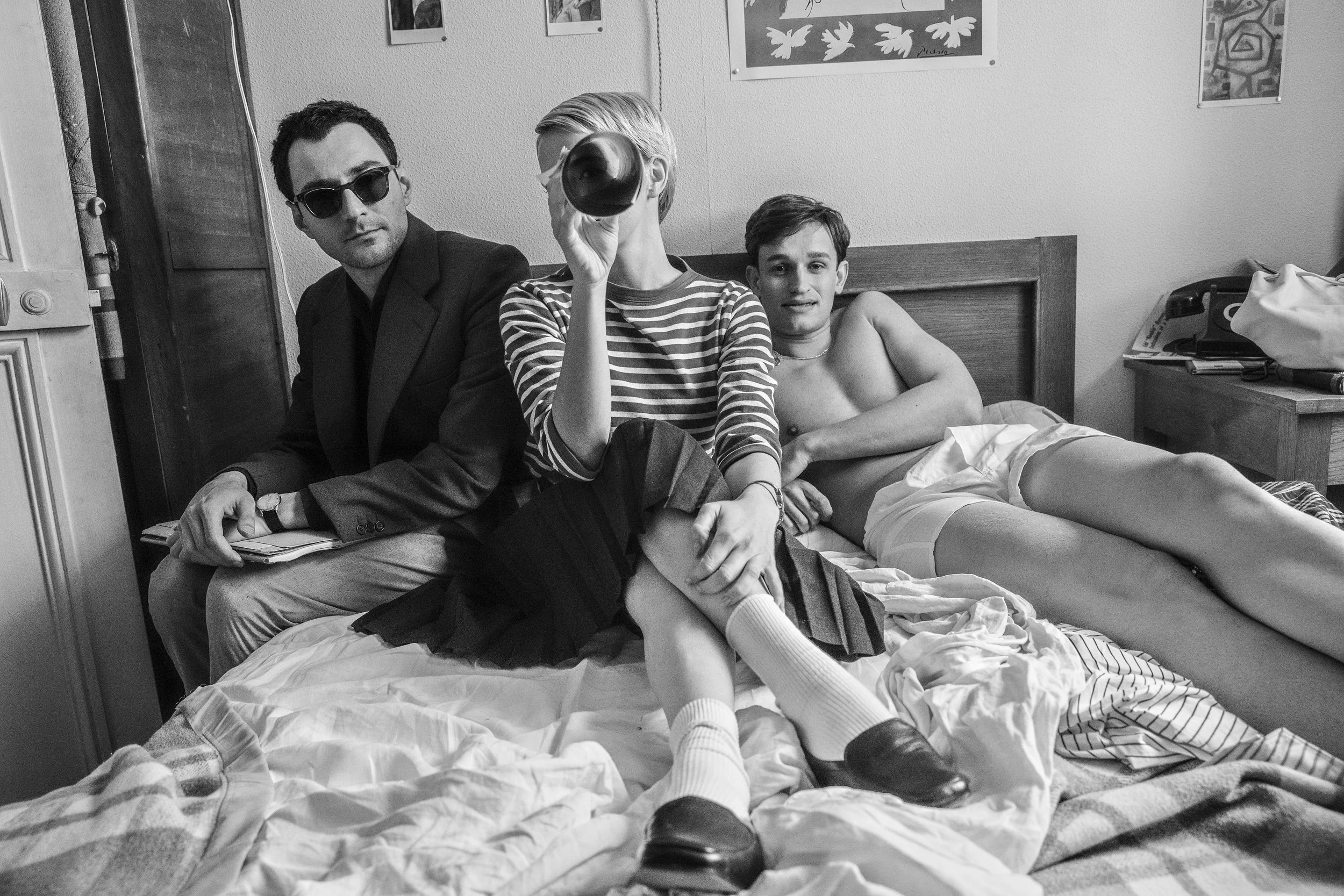‘Nouvelle Vague’ Review
A feeling of creative unrest washes over the entirety of Richard Linklater’s second feature-length film of 2025, Nouvelle Vague. It’s a feeling that even Linklater must have contended with before crafting his feature directorial debut, Slacker, back in 1990. Technology has continued to simplify the act of going out and making a movie, but one of the roadblocks is almost always the individual who wants to create but can’t quite take the leap. However, it’s watching movies like Slacker or Jean-Luc Godard’s feature debut, Breathless, that can sometimes inspire the right person at the right time to take that leap of faith. Evoking the unique style of filmmaking it captures, both aesthetically and logistically, Nouvelle Vague is a breezy journey through the beginnings of the French New Wave and a call to arms for aspiring filmmakers to pick up their cameras and make a movie.
As with anything film-related, it all begins with the Cannes Film Festival. As Jean-Luc Godard’s (portrayed by Guillaume Marbeck) peers from Cahiers du cinéma continue achieving success in feature filmmaking—including a young François Truffaut (Adrien Rouyard) receiving a standing ovation at Cannes for his debut feature, The 400 Blows—Godard sees his time as a film critic and the few short films under his belt as unsatisfactory. Instead, he looks to make his first feature by whatever means necessary. Through modest financing from producer Georges de Beauregard (Bruno Dreyfürst) and the casting of American actress Jean Seberg (Zoey Deutch), the director attempts to create a movie that defies conventional filmmaking and storytelling techniques, truly capturing the spirit of the Nouvelle Vague.
There’s no denying that Linklater’s latest is laden with quotes, people, films, and other reference points that play like inside baseball and can undoubtedly seem cumbersome for those unfamiliar with the French New Wave. It’s something that cannot be avoided, though Nouvelle Vague stacks the odds against the uninformed audience early, making it seem inaccessible to the average viewer. Essential figures in French cinema’s history are not just name-dropped; they are also portrayed in the film, if only for a moment. Simultaneously acting as a crash course in film studies and a cinephile’s version of fan service, Nouvelle Vague’s expansive list of notable names reflects the scope of the cinematic movement and a community constantly in conversation with one another. It feels chaotic as Godard ceases filming after a couple of hours, only to spend the rest of his time meeting with Robert Bresson while he films Pickpocket or playing pinball at the local cafe.
However, Godard’s film only has twenty days of filming permitted, which keeps Linklater’s film from feeling too unwieldy in its digressions. The twenty days provide some structure to a movie that appears frequently unstructured, as Godard withholds dialogue from his actors—much to the chagrin of Seberg—and his producer is constantly trying to wrangle Godard away from the nearby pinball machine. Everyone outside of Seberg—including her co-star, Jean-Paul Belmondo (Aubry Dullin)—has resigned themselves to a freeform filming style where they may never know what the next day holds. Still, they believe that Godard is steering the ship in the only way he wants. Linklater conveys the idea of “trusting the process” so effectively by merely showing the making of a movie, where the result speaks for itself. In fact, Linklater’s depiction of the events ends relatively soon after the film has been completed, and our only hint of its success is spelled out before the credits roll, and in film history.
The meticulous attention to detail in the making of a film, where attention to detail was the last thing on its director’s mind, is strongly felt in Nouvelle Vague. However, Holly Gent and Vincent Palmo Jr.’s screenplay retains the same brisk pacing as Godard’s film. Linklater’s decision to not only depict the making of Breathless, but also evoke it in every ounce of its design, pays off splendidly. The French cast and crew, both in front of and behind the camera, add layers to a film where others might have intervened and asked for a big Hollywood star opposite Deutch. It’s a very French production, shot and edited in a way that feels like a product of the French New Wave. Linklater’s film is unsurprisingly reverential, but not for Breathless itself, but for the way it was made and the motivations that drove its inception.
Nouvelle Vague will have many cinephiles combing through their Letterboxd watchlists and scouring the Criterion Collection for French classics referenced in Linklater’s film. It’s not just Breathless that gets the promotional boost in Nouvelle Vague, which is what makes it a far more rewarding film than it initially sounds like on paper. This is not just the making of Breathless. It’s the refinement of a movement and a distillation of an ethos. It’s the urge to create when it seems impossible to do so. Nouvelle Vague is a celebration of acting on those creative impulses. While Linklater’s latest might keep some audiences at bay with its niche subject matter and deluge of French cinema history, it also effectively conveys what made its titular movement so exciting and is a welcome departure from the myriad of biopics that fall prey to the same conventional filmmaking that Godard fought against in the making of Breathless.


